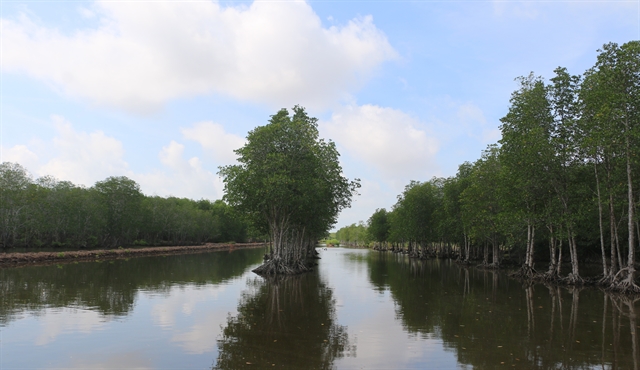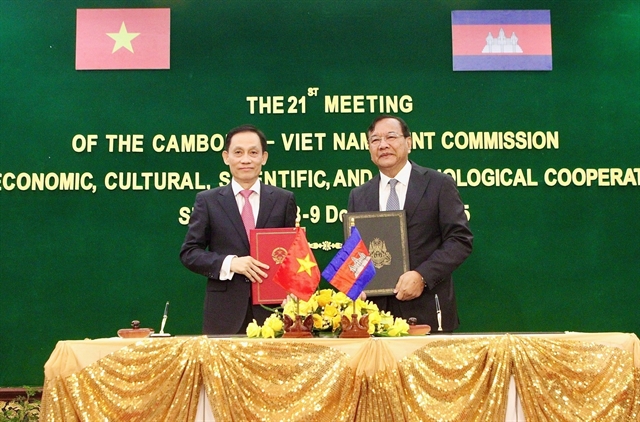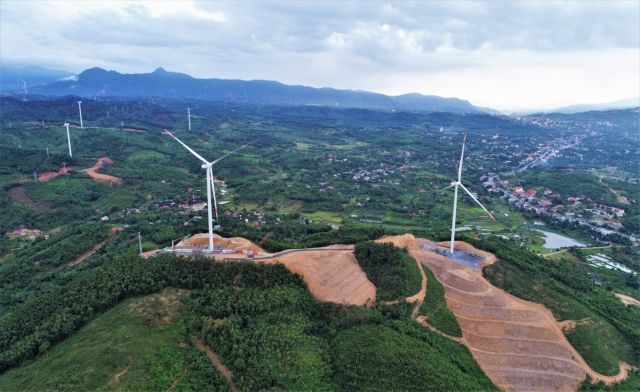 Environment
Environment


|
| A wind power project in Hướng Hoá District, the central province of Quảng Trị, is slated to be operational before October this year. — VNA/VNS Photo Nguyên Lý |
The Director of the Center for Energy and Green Growth Research Hà Đăng Sơn talks to Vietnam News Agency about green growth in Việt Nam, emphasising the role of the private sector.
What is the role of green growth in Việt Nam’s economy?
When Việt Nam launched its first national green growth strategy nearly a decade ago, it put a big emphasis on balancing economic outputs and environmental protection as well as joining international efforts to reduce greenhouse gas emissions.
For a long time, economic growth was very important and urgent for developing countries like Việt Nam.
However, there are always trade-offs between economic output and environmental protection, and cultural and social issues. Balancing all those factors is both a big challenge and an urgent task for Việt Nam.
In your opinion, what are the major achievements that Việt Nam has made in the implementation of its national green growth strategy from 2012 to 2020?
In 2012, the Government of Việt Nam launched its national strategy on green growth development with the desire to balance the three pillars of economic and social development, and environmental protection.
At that time, the country faced a shortage of legal frameworks to support the strategy. In 2014, Việt Nam developed a detailed roadmap for green growth.
Under the strategy implemented from 2012 to 2020, Việt Nam mostly completed the legal framework necessary and prepared for activities related to green growth on a larger scale.
I think that during this period, Việt Nam reviewed and improved the legal framework and policies for green growth development as well as evaluated the feasibility of different approaches to green growth.
What has Việt Nam done to boost green growth?
After approving the national green growth strategy, Việt Nam had a detailed plan for green growth. Under the plan, it pointed out 12 groups of issues and 66 actions to be taken for ministries, agencies, localities and political/social organisations. It has sped up studies and mechanisms related to green growth. For example, approving the Law on Planning, Law on Public Investment and the amended Law on Environmental Protection.
Ministries and agencies actively issued and exercised policies advocating green growth such as those on green energy or the Government’s incentives for solar/wind power.
Do you have any recommendations on financing green growth development, especially when public investment is limited?
International experiences show that public investment is not a major financial source in responding to climate change or green growth.
The Republic of Korea only uses public funding to build up confidence for private investors to invest in a project.
I think that in the past, Việt Nam struggled to attract funding from the private sector due to the lack of coordination mechanisms among the central government and relevant parties.
As Việt Nam is restructuring its economy with a thriving private sector, private investment is needed.
According to studies by the World Bank Group and United Nations Environment Programme, Việt Nam spent only 0.1 per cent of gross domestic product on climate change responses and green growth.
To further attract private investors, the Government should have a long-term vision with long-term policies to gain the confidence of private investors. At the moment, many private investments are for four or five years only and then the investors change to other areas because they are afraid of policy risks.
Việt Nam is developing a national green growth strategy during the period 2021-2030 with a vision toward 2045-2050. What do you expect most from the new strategy?
In my opinion, the strategy needs to concentrate on improving the legal framework. In particular, it needs a mechanism to manage coordination between the central government and local governments.
Clear policies, especially financial mechanisms are needed to further attract private investment. The participation of the private sector is important when Việt Nam wants to implement the strategy widely. VNS




